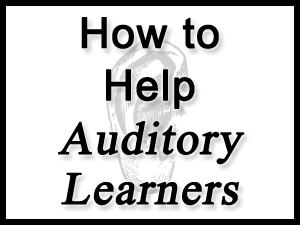
Keep your kids engaged and entertained with Pinna’s comprehensive and growing library. Pinna is an excellent tool for screen-free learning and fun all year round. For the cost of one cup of coffee a month, your whole family has access to a growing library of kid-safe, ad-free audio content for children ages 3-12.

Obviously, this doesn’t fully encompass all of the traits of auditory learners, but it gives you a good overview and can offer some insight into whether or not your child learns best by hearing. prefers lecture and discussion over written assignments tends to read with whispering lip movements has trouble concentrating when there is too much or not enough background noise You understand and remember things you have heard. prefers spoken instructions over written instructions The Learning Styles Auditory Visual Tactile If you are an auditory learner, you learn by hearing and listening. talks frequently, to themselves and others Characteristics of an Auditory Learnerĭoes your child absorb information best by listening? If you aren’t sure, check out some common characteristics you might see in an auditory learner. Kinesthetic - Kinesthetic (or tactile) learners learn by touching and doing.

Visual - Visual learners learn by reading or seeing pictures.Īuditory - Auditory learners learn by hearing and speaking. In case you aren’t familiar with the three different learning styles, here’s a very brief explanation of each. Today, we’re going to tell you why auditory learners, in particular, can benefit from listening to podcasts at home and at school.

In the past, we’ve shared why podcasts are a handy resource for all types of learners - visual, auditory, and kinesthetic. But when are podcasts going to get their time to shine? We’ve been touting the wonders of audiobooks for years. Podcasts are a highly underrated teaching tool.


 0 kommentar(er)
0 kommentar(er)
